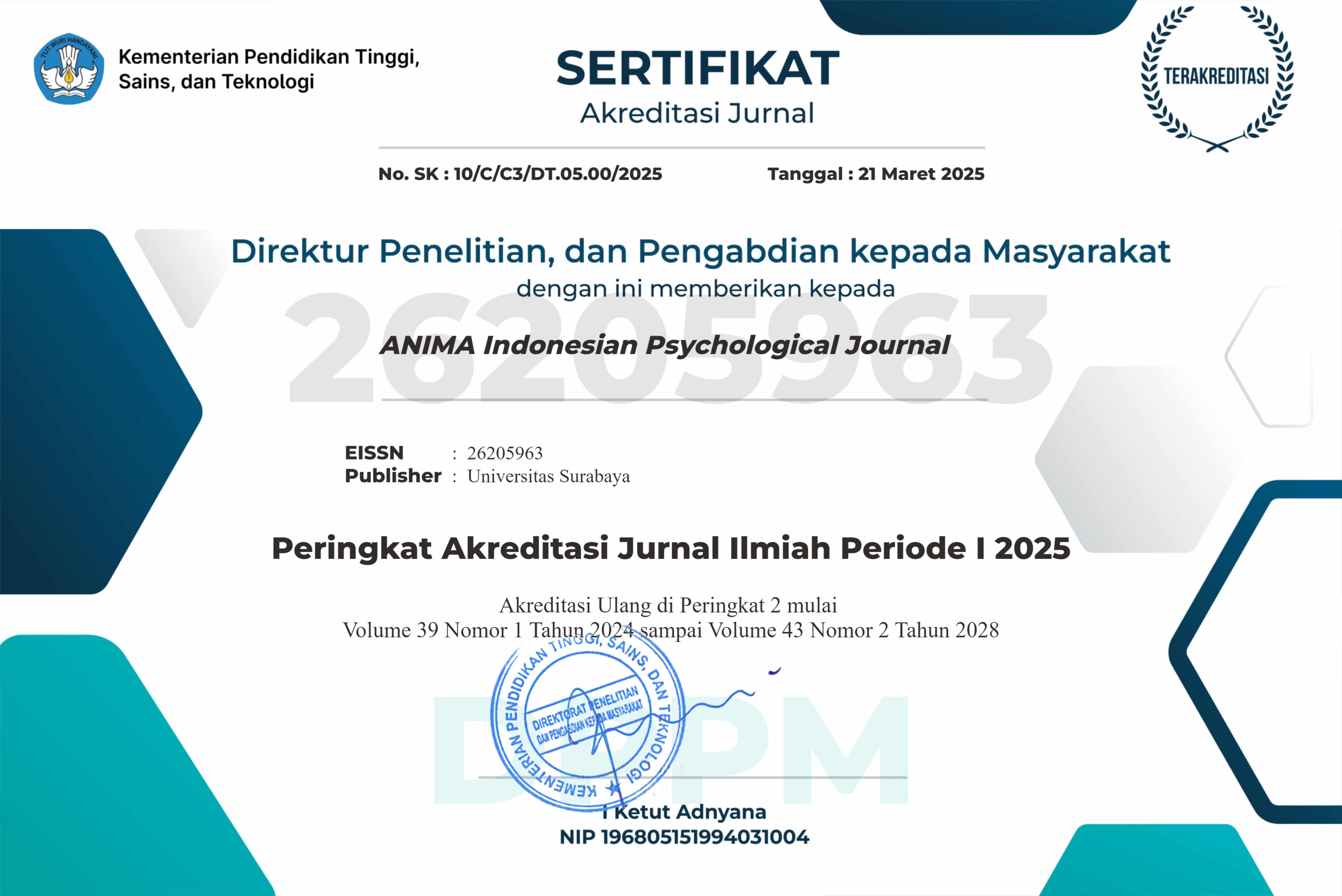How Does Urban Environment Affect Children's Happiness? A Scoping Review
 Abstract Views:
672 times
Abstract Views:
672 times
 PDF - Full Text Downloads:
495 times
PDF - Full Text Downloads:
495 times
Abstract
Child-Friendly City Initiatives (CFCI) emphasizes the importance of creating urban environments that support children’s health and well-being. This scoping review maps studies that examine the relationship between urban environmental characteristics and children’s happiness (well-being) with children as participants. Based on a systematic search of four databases (Web of Science [WoS], SAGE Journals, Scopus, and ProQuest), eight articles were identified that met the inclusion criteria, namely: (a) empirical studies involving children’s perspectives; (b) studies examining the relationship between urban environmental features and children’s happiness (well-being); and (c) studies published in peer-reviewed English-language journals between 2004-2024. This scoping review revealed that there are five main environmental features that influence children’s happiness (well-being), namely: (1) built environment; (2) natural environment; (3) play areas; (4) traffic conditions; and (5) cohesive social environment. These features influence children's happiness (well-being) through three underlying mechanisms, namely: (1) psychological; (2) social; and (3) physical activity. Moderating factors such as age, socioeconomic status, and gender identity were also identified as influencing the strength of the relationship between environmental features and children's happiness (well-being). This scoping review also produces recommendations for future study directions to enrich the understanding of the relationship between urban environments and children's happiness (well-being) in urban areas.
Downloads
References
Adiwena, B. Y., & Djuwita, R. (2019). Nature relatedness as a predictor of psychological well-being: A study of Indonesian urban society. ANIMA Indonesian Psychological Journal, 34(4), 175-187. https://doi.org/10.24123/aipj.v34i4.2578
Agarwal, K. M., Sehgal, V., & Ogra, A. (2021). A critical review of standards to examine the parameters of child-friendly environment (CFE) in parks and open space of planned neighborhoods: A case of Lucknow city, India. Social Sciences, 10(6): 199. https://doi.org/10.3390/socsci10060199
Alderson, P., & Morrow, V. (2011). The ethics of research with children and young people: A practical handbook (2nd ed.). SAGE Publications Ltd. https://doi.org/10.4135/9781446268377
Alfaro, J., Benavente, M., Bedin, L. M., & Chuecas, M. J. (2024). Life satisfaction and the relationship experience at family, school, and neighborhood levels for Chilean children. Journal of Child and Family Studies, 33(5), 1425-1436. https://doi.org/10.1007/s10826-024-02836-9
Arksey, H., & O’Malley, L. (2005). Scoping studies: Towards a methodological framework. International Journal of Social Research Methodology: Theory and Practice, 8(1), 19-32. https://doi.org/10.1080/1364557032000119616
Arlinkasari, F. (2021). Qualitative evaluation of child friendly public places in the Indonesian urban poverty context [Master’s thesis, Queensland University of Technology]. Queensland University of Technology (QUT) ePrints. https://doi.org/10.5204/thesis.eprints.210468
Balen, R., Blyth, E., Calabretto, H., Fraser, C., Horrocks, C., & Manby, M. (2006). Involving children in health and social research: ‘Human becomings’ or ‘active beings’? Childhood, 13(1), 29-48. https://doi.org/10.1177/0907568206059962
Budge, S. L., Adelson, J. L., & Howard, K. A. S. (2013). Anxiety and depression in transgender individuals: The roles of transition status, loss, social support, and coping. Journal of Consulting and Clinical Psychology, 81(3), 545-557. https://doi.org/10.1037/a0031774
Buttazzoni, A., & Minaker, L. (2023). Associations between adolescent mental health and pedestrian- and transit-oriented urban design qualities: Evidence from a national-level online Canadian survey. Urban Studies, 60(10), 1968-1986. https://doi.org/10.1177/00420980221138311
Chawla, L. (Ed.). (2001). Growing up in an urbanizing world. Routledge. https://doi.org/https://doi.org/10.4324/9781315541365
Chawla, L. (2015). Benefits of nature contact for children. Journal of Planning Literature, 30(4), 433-452. https://doi.org/10.1177/0885412215595441
Clark, A., & Moss, P. (2011). Listening to young children: The Mosaic approach (2nd ed.). National Children’s Bureau. https://resources.ncb.org.uk/resources/publications/view-publication?PubID=728
Cordero-Vinueza, V. A., Niekerk, F., & van Dijk, T. (2023). Making child-friendly cities: A socio-spatial literature review. Cities, 137: 104248. https://doi.org/10.1016/j.cities.2023.104248
Cosco, N. G., Moore, R. C., & Islam, M. Z. (2010). Behavior mapping: A method for linking preschool physical activity and outdoor design. Medicine and Science in Sports and Exercise, 42(3), 513-519. https://doi.org/10.1249/MSS.0b013e3181cea27a
Cunningham, C., & Jones, M. (2006). Middle childhood and the built environment: A submission to the NSW Parliamentary Committee on Children and Young People; Inquiry into children, young people and the built environment. NAPCAN Foundation. https://citeseerx.ist.psu.edu/document?repid=rep1&type=pdf&doi=7d5d65014a87c01ae5f5ee50ce3a0758ff4d1dc3
Diener, E., Emmons, R. A., Larsen, R. J., & Griffin, S. (1985). The Satisfaction With Life Scale. Journal of Personality Assessment, 49(1), 71-75. https://doi.org/10.1207/s15327752jpa4901_13
Diener, E., Suh, E. M., Lucas, R. E., & Smith, H. L. (1999). Subjective well-being: Three decades of progress. Psychological Bulletin, 125(2), 276-302. https://doi.org/10.1037/0033-2909.125.2.276
Ditzel, A. L., Ketain Meiri, Y., Casas, F., Ben-Arieh, A., & Torres-Vallejos, J. (2023). Satisfaction with the neighborhood of Israeli and Chilean children and its effects on their subjective well-being. Child Indicators Research, 16(2), 863-895. https://doi.org/10.1007/s12187-022-10001-1
Fredrickson, B. L. (2001). The role of positive emotions in positive psychology: The broaden-and-build theory of positive emotions. American Psychologist, 56(3), 218-226. https://doi.org/10.1037/0003-066X.56.3.218
Grant, M. J., & Booth, A. (2009). A typology of reviews: An analysis of 14 review types and associated methodologies. Health Information and Libraries Journal, 26(2), 91-108. https://doi.org/10.1111/j.1471-1842.2009.00848.x
Gusenbauer, M., & Haddaway, N. R. (2020). Which academic search systems are suitable for systematic reviews or meta-analyses? Evaluating retrieval qualities of Google Scholar, PubMed, and 26 other resources. Research Synthesis Methods, 11(2), 181-217. https://doi.org/10.1002/jrsm.1378
Henderson, H., Child, S., Moore, S., Moore, J. B., & Kaczynski, A. T. (2016). The influence of neighborhood aesthetics, safety, and social cohesion on perceived stress in disadvantaged communities. American Journal of Community Psychology, 58(1-2), 80-88. https://doi.org/10.1002/ajcp.12081
Hong, Q., Pluye, P., Fàbregues, S., Bartlett, G., Boardman, F., Cargo, M., Dagenais, P., Gagnon, M. -P., Griffiths, F., Nicolau, B., Rousseau, M.-C., & Vedel, I. (2018). Mixed Methods Appraisal Tool (MMAT) version 2018: User guide. Department of Family Medicine, McGill. https://mixedmethodsappraisaltoolpublic.pbworks.com/w/file/fetch/127916259/MMAT_2018_criteria-manual_2018-08-01_ENG.pdf
Hosokawa, R., & Katsura, T. (2020). The relationship between neighborhood environment and child mental health in Japanese elementary school students. International Journal of Environmental Research and Public Health, 17(15): 5491. https://doi.org/10.3390/ijerph17155491
Kim, J. -H., Lee, C., & Sohn, W. (2016). Urban natural environments, obesity, and health-related quality of life among Hispanic children living in inner-city neighborhoods. International Journal of Environmental Research and Public Health, 13(1): 121. https://doi.org/10.3390/ijerph13010121
Levac, D., Colquhoun, H., & O’Brien, K. K. (2010). Scoping studies: Advancing the methodology. Implementation Science, 5(1): 69. https://doi.org/10.1186/1748-5908-5-69
Mayall, B. (2008). Conversations with children: Working with generational issues. In P. Christensen, & A. James (Eds.), Research with children: Perspectives and practices (2nd ed., pp. 109-123). Routledge. https://doi.org/10.4324/9780203964576 | https://www.taylorfrancis.com/chapters/edit/10.4324/9780203964576-12/conversations-children-working-generational-issues-berry-mayall?context=ubx&refId=c5f68d0d-8201-448b-aac1-807598bd7275
Menteri Negara Pemberdayaan Perempuan dan Perlindungan Anak Republik Indonesia [National Ministry of Women Empowerment and Child Protection of the Republic of Indonesia]. (2010). Peraturan Menteri Negara Pemberdayaan Perempuan dan Perlindungan Anak Republik Indonesia nomor 14 tahun 2010 tentang pedoman pengembangan kabupaten/kota layak anak tingkat provinsi [National regulation of the of the Ministry of Women Empowerment and Child Protection of the Republic of Indonesia number 14 year 2010 regarding the province-level child-friendly city or regency development guide]. Jaringan Dokumentasi dan Informasi Hukum (JDIH) Kementerian Pemberdayaan Perempuan dan Perlindungan Anak Republik Indonesia. https://jdih.kemenpppa.go.id/dokumen-hukum/produk-hukum/62
Meyer, M. R. U., Prochnow, T., Pickett, A. C., Perry, C. K., Bridges Hamilton, C. N., Abildso, C. G., & Pollack Porter, K. M. (2021). The effects of play streets on social and community connectedness in rural communities. International Journal of Environmental Research and Public Health, 18(19): 9976. https://doi.org/10.3390/ijerph18199976
Moher, D., Liberati, A., Tetzlaff, J., Altman, D. G., & The PRISMA Group. (2009). Preferred Reporting Items for Systematic Reviews and Meta-Analyses: The PRISMA statement. PLoS Medicine, 6(7): e1000097. https://doi.org/10.1371/journal.pmed.1000097
Munn, Z., Peters, M. D. J., Stern, C., Tufanaru, C., McArthur, A., & Aromataris, E. (2018). Systematic review or scoping review? Guidance for authors when choosing between a systematic or scoping review approach. BioMed Central (BMC) Medical Research Methodology, 18(1): 143. https://doi.org/10.1186/s12874-018-0611-x
Murniati, N., Al Aufa, B., Kusuma, D., & Kamso, S. (2022). A scoping review on biopsychosocial predictors of mental health among older adults. International Journal of Environmental Research and Public Health, 19(17): 10909. https://doi.org/10.3390/ijerph191710909
Nisa, N. J. (2022). The emergence and rise of Indonesia’s child-friendly cities through the lens of policy translation (Research paper, International Institute of Social Studies). Erasmus University Thesis Repository. https://hdl.handle.net/2105/65353
Page, M. J., McKenzie, J. E., Bossuyt, P. M., Boutron, I., Hoffmann, T. C., Mulrow, C. D., Shamseer, L., Tetzlaff, J. M., Akl, E. A., Brennan, S. E., Chou, R., Glanville, J., Grimshaw, J. M., Hróbjartsson, A., Lalu, M. M., Li, T., Loder, E. W., Mayo-Wilson. E., McDonald, S., McGuinness, L. A., Stewart, L. A., Thomas, J., Tricco, A. C., Welch, V. A., Whiting, P., & Moher, D. (2021). The PRISMA 2020 statement: An updated guideline for reporting systematic reviews. British Medical Journal (BMJ), 372: 71. https://doi.org/10.1136/bmj.n71
Prout, A. (2011). Taking a step away from modernity: Reconsidering the new sociology of childhood. Global Studies of Childhood, 1(1), 4-14. https://doi.org/10.2304/gsch.2011.1.1.4
Riggio, E. (2002). Child friendly cities: Good governance in the best interests of the child. Environment and Urbanization, 14(2), 45-58. https://doi.org/10.1177/095624780201400204
Ryff, C. D. (1989). Happiness is everything, or is it? Explorations on the meaning of psychological well-being. Journal of Personality and Social Psychology, 57(6), 1069-1081. https://doi.org/10.1037/0022-3514.57.6.1069
Sapsağlam, Ö., & Eryılmaz, A. (2024). Building child-friendly cities for sustainable child development: Child-friendly City Scale-Child Form. Sustainability, 16(3): 1228. https://doi.org/10.3390/su16031228
Schimmack, U., Diener, E., & Oishi, S. (2002). Life‐satisfaction is a momentary judgment and a stable personality characteristic: The use of chronically accessible and stable sources. Journal of Personality, 70(3), 345-384. https://doi.org/10.1111/1467-6494.05008
Teixeira, S. (2016). Beyond broken windows: Youth perspectives on housing abandonment and its impact on individual and community well-being. Child Indicators Research, 9(3), 581-607. https://doi.org/10.1007/s12187-015-9327-1
Thomas, N. P. (2021). Child-led research, children’s rights and childhood studies: A defence. Childhood, 28(2), 186-199. https://doi.org/10.1177/0907568221996743
Tricco, A. C., Lillie, E., Zarin, W., O’Brien, K. K., Colquhoun, H., Levac, D., Moher, D., Peters, M. D. J., Horsley, T., Weeks, L., Hempel, S., Akl, E. A., Chang, C., McGowan, J., Stewart, L., Hartling, L., Aldcroft, A., Wilson, M. G., Garritty, C., Lewin, S., Godfrey, C. M., Macdonald, M. T., Langlois, E. V., Soares-Weiser, K., Moriarty, J., Clifford, T., Tunçalp, Ö., & Straus, S. E. (2018). PRISMA Extension for Scoping Reviews (PRISMA-ScR): Checklist and explanation. Annals of Internal Medicine, 169(7), 467-473. https://doi.org/10.7326/M18-0850
United Nations Children’s Fund (UNICEF). (n.d.a.). CFCI framework: Building a child friendly city. Child Friendly Cities Initiative. https://www.childfriendlycities.org/cfci-framework
United Nations Children’s Fund (UNICEF). (n.d.b.). Strategies & focus areas: Best practices. Child Friendly Cities Initiative. https://www.childfriendlycities.org/strategies-focus-areas
United Nations Children’s Fund (UNICEF). (2021a). Evaluation of UNICEF work for children in urban settings – Summary (FRS 2021) [E/ICEF/2021/3]. United Nations Children’s Fund (UNICEF). https://www.unicef.org/executiveboard/documents/evaluation-unicef-work-children-urban-settings-summary-frs-2021
United Nations Children’s Fund (UNICEF). (2021b). UNICEF management response to the evaluation of UNICEF work for children in urban settings [E/ICEF/2021/4]. United Nations Children’s Fund (UNICEF). https://www.unicef.org/executiveboard/documents/unicef-management-response-evaluation-unicef-work-children-urban-settings
United Nations Children’s Fund (UNICEF) East Asia and Pacific Regional Office. (2023). Child friendly cities in the East Asia and Pacific region: A regional overview of modalities, practices, and instances to shape inclusive and sustainable cities for children. United Nations Children’s Fund (UNICEF). https://www.unicef.org/eap/media/14627/file/UNICEF%20Child%20Friendly%20Cities%20in%20the%20East%20Asia%20and%20Pacific%20Region.pdf
United Nations Children’s Fund (UNICEF) Innocenti Research Centre, International Secretariat for Child Friendly Cities. (2004). Building child friendly cities: A framework for action. Child Rights Resource Centre. https://resourcecentre.savethechildren.net/document/building-child-friendly-cities-framework-action/
Valentine, G., & McKendrck, J. (1997). Children’s outdoor play: Exploring parental concerns about children’s safety and the changing nature of childhood. Geoforum, 28(2), 219-235. https://doi.org/10.1016/S0016-7185(97)00010-9
Valois, R. F., Kerr, J. C., Carey, M. P., Brown, L. K., Romer, D., DiClemente, R. J., & Vanable, P. A. (2020). Neighborhood stress and life satisfaction: Is there a relationship for African American adolescents? Applied Research in Quality of Life, 15(1), 273-296. https://doi.org/10.1007/s11482-018-9679-z
Wolch, J. R., Byrne, J., & Newell, J. P. (2014). Urban green space, public health, and environmental justice: The challenge of making cities ‘just green enough.’ Landscape and Urban Planning, 125, 234-244. https://doi.org/10.1016/j.landurbplan.2014.01.017
Zhang, Y., Zhao, J., Mavoa, S., Fenaughty, J., Clark, T. C., Crengle, S., & Smith, M. (2024). Impacts of sociodemographic factors, identities and neighbourhood safety on the relationship between urban green space and adolescent mental well-being: Findings from Tāmaki Makaurau Auckland, Aotearoa New Zealand. Social Science Medicine (SSM) - Population Health, 25(March): 101603. https://doi.org/10.1016/j.ssmph.2024.101603

This work is licensed under a Creative Commons Attribution-NonCommercial-ShareAlike 4.0 International License.

This work is licensed under a Creative Commons Attribution-NonCommercial-ShareAlike 4.0 International License.
Articles published in ANIMA are licensed under a Creative Commons Attribution-NonCommercial-ShareAlike 4.0 International license. You are free to copy, transform, or redistribute articles for any lawful, non-commercial purpose in any medium, provided you give appropriate credit to ANIMA and the original Author(s), link to the license, indicate if changes were made, and redistribute any derivative work under the same license.
Copyright on articles is retained by the respective Author(s), without restrictions. A non-exclusive license is granted to ANIMA to publish the article and identify itself as its original publisher, along with the commercial right to include the article in a hardcopy issue for sale to libraries and individuals.
By publishing in ANIMA, Author(s) grant any third party the right to use their article to the extent provided by the Creative Commons Attribution-NonCommercial-ShareAlike 4.0 International license.

 DOI:
DOI:



